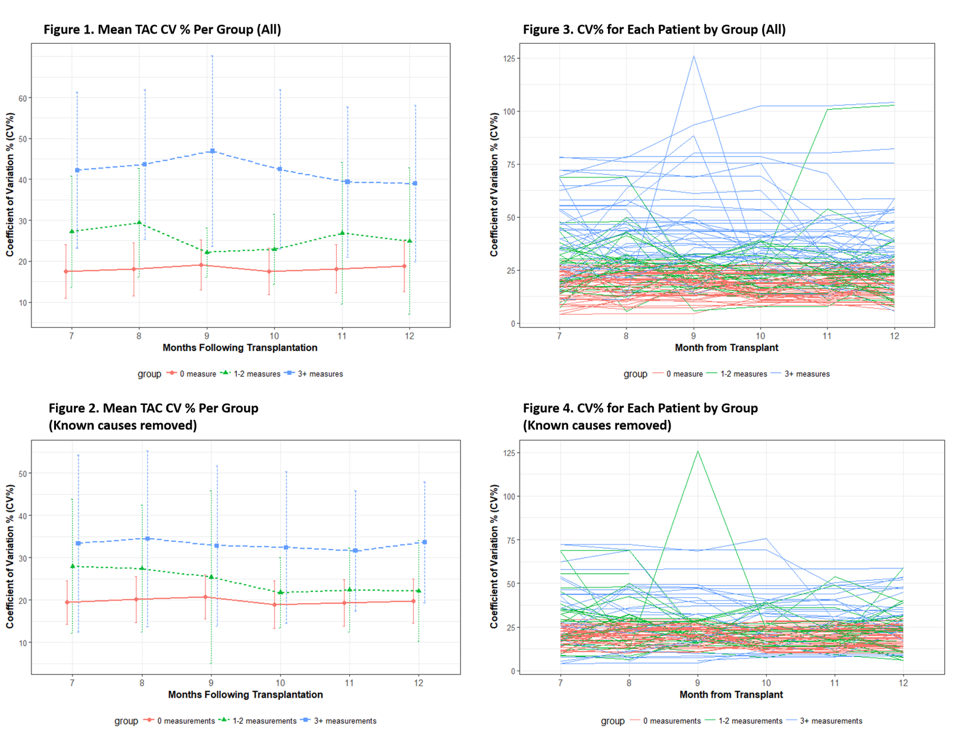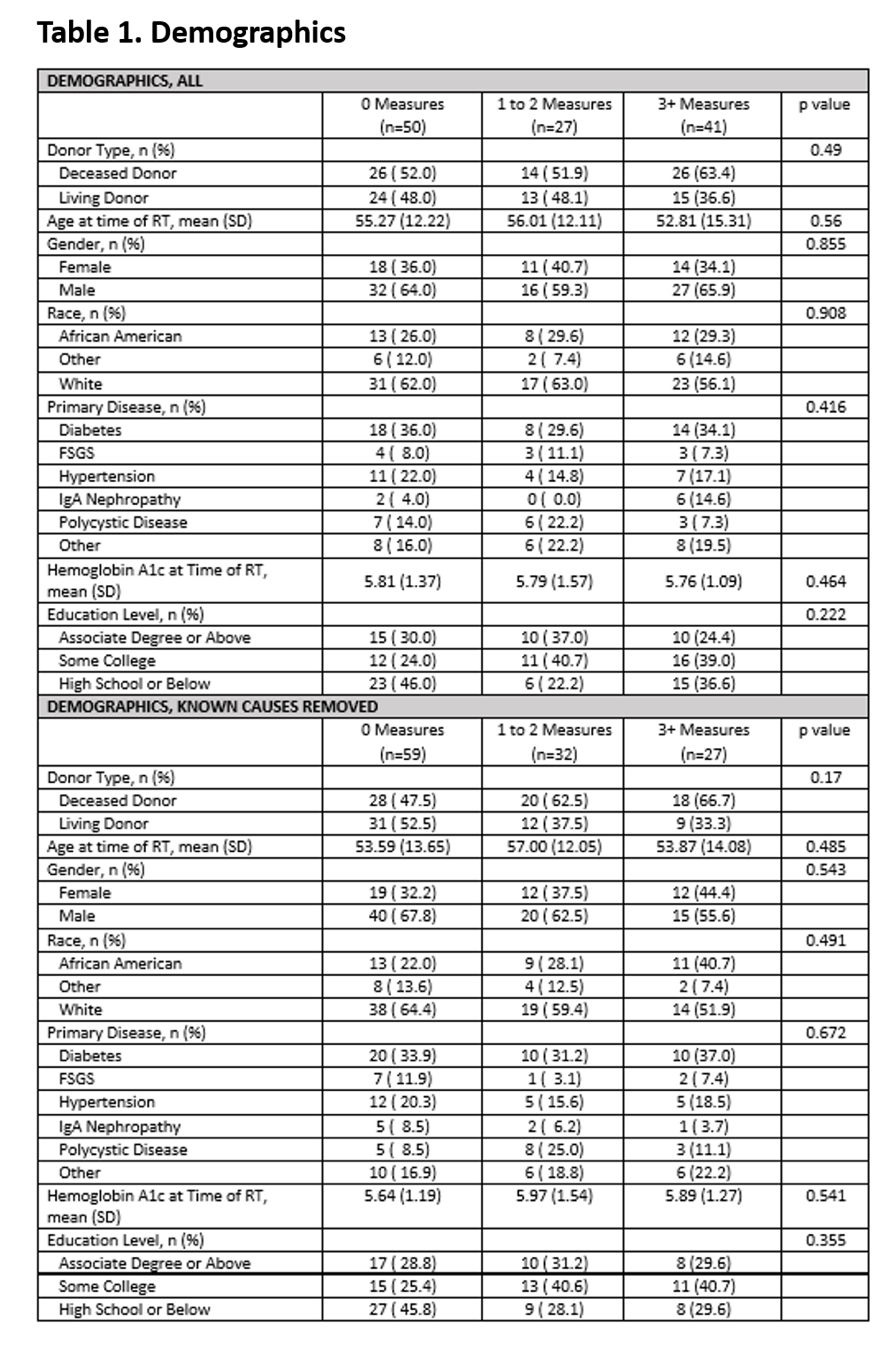Natural Evolution Of Tacrolimus Intra-patient Variability Among Renal Transplant Recipients
K. Zheng, S. Tremblay, N. S. Ejaz, N. K. Wilson, K. Hoffman, T. Kaur, M. Anand, E. S. Woodle, R. R. Alloway, T. E. Kaiser
University of Cincinnati, Cincinnati, OH
Meeting: 2019 American Transplant Congress
Abstract number: C106
Keywords: Age factors, Kidney, Monitoring, Psychosocial
Session Information
Session Name: Poster Session C: Kidney Psychosocial
Session Type: Poster Session
Date: Monday, June 3, 2019
Session Time: 6:00pm-7:00pm
 Presentation Time: 6:00pm-7:00pm
Presentation Time: 6:00pm-7:00pm
Location: Hall C & D
*Purpose: High tacrolimus (TAC) intra-patient variability (IPV) has been correlated with negative outcomes post renal transplant (RT). The natural evolution of TAC IPV remains uncharacterized and may aid in early identification of patients that may benefit from preemptive intervention.
*Methods: RT patients from 1/16-10/17 were retrospectively reviewed. TAC IPV assessed with coefficient of variation (CV%) (standard deviation/mean) using 5 prior ambulatory levels. CV%s were collected monthly over 7-12 months post RT. Elevated CV% was defined as ≥30%. Grouping was based on if patients had 0, 1-2, or 3 measures of CV% ≥30%. Analysis was performed on all patients, and on a subset (known causes removed). Data points CV%≥30% were removed if associated with known causes (TAC goal changed, inappropriate lab timing, drug interaction). Natural evolution was described using means and standard deviation over time. Factors associated with CV% ≥30% were identified with classification trees and logistic regression models.
*Results: 118 RT only recipients included; demographic and patient characteristics summarized in Table 1. Figures 1 and 2 describe the evolution of CV% between 7-12M post-RT. In the overall patient population, age<30 y/o at RT and highest education level as “some college” were associated with any CV% measurement ≥30%: odds ratios per logistic regression were 6.46 and 1.40, respectively. When CV%s ≥30% with known causes of variability were removed, no strong predictors were identified.
*Conclusions: Age<30 at RT and education level were strong predictors of elevated CV% post-RT. Identification of patient factors associated with high TAC-IPV may allow for targeted patient screening and early interventions to help prevent negative outcomes.
To cite this abstract in AMA style:
Zheng K, Tremblay S, Ejaz NS, Wilson NK, Hoffman K, Kaur T, Anand M, Woodle ES, Alloway RR, Kaiser TE. Natural Evolution Of Tacrolimus Intra-patient Variability Among Renal Transplant Recipients [abstract]. Am J Transplant. 2019; 19 (suppl 3). https://atcmeetingabstracts.com/abstract/natural-evolution-of-tacrolimus-intra-patient-variability-among-renal-transplant-recipients/. Accessed December 10, 2025.« Back to 2019 American Transplant Congress


